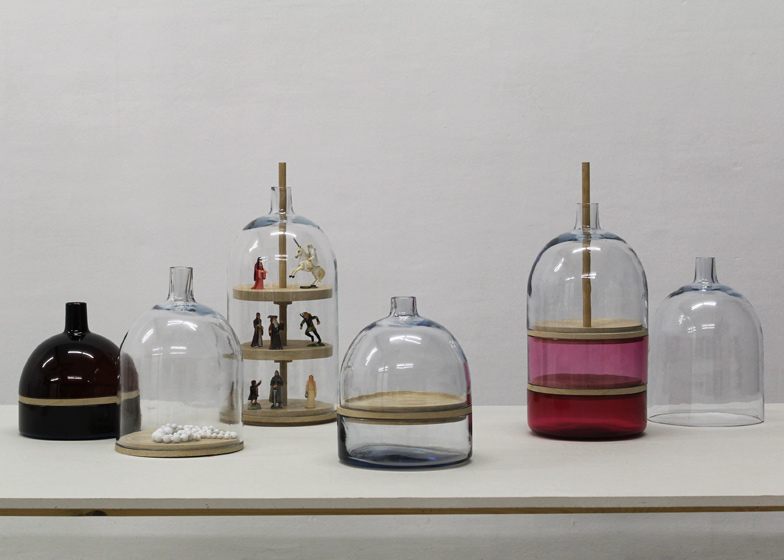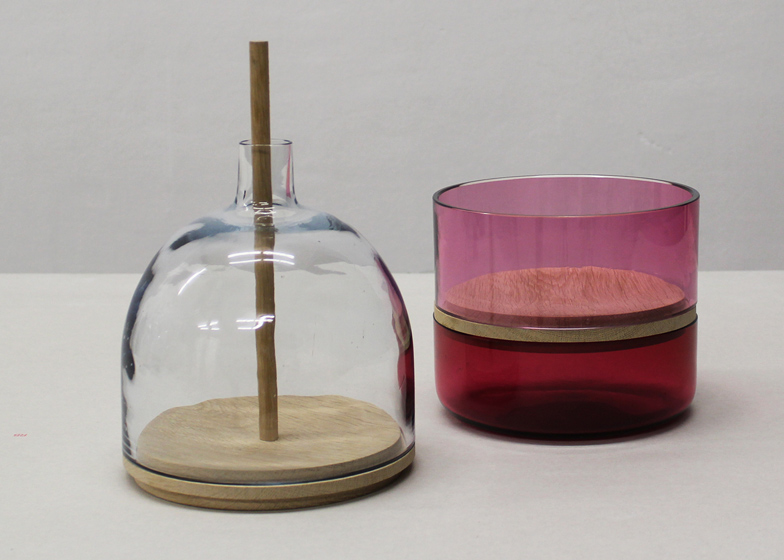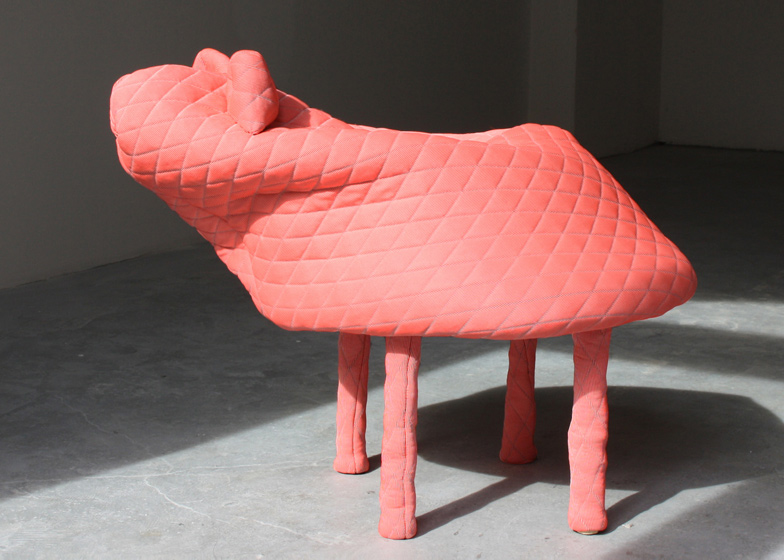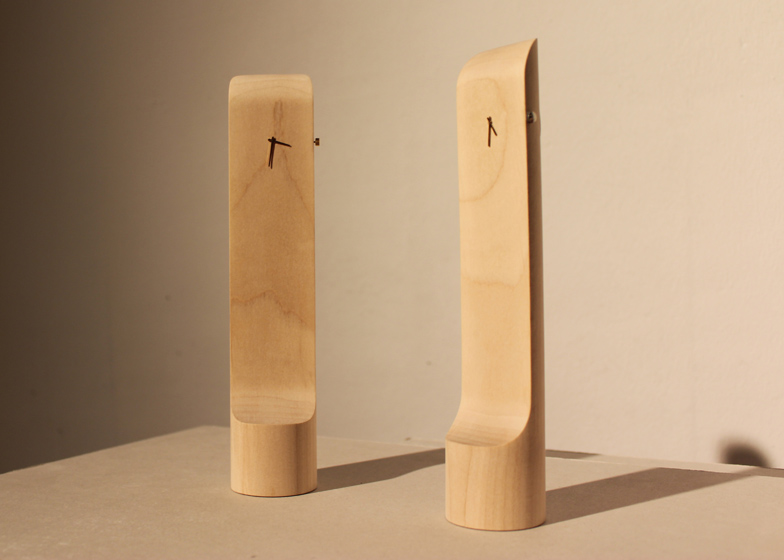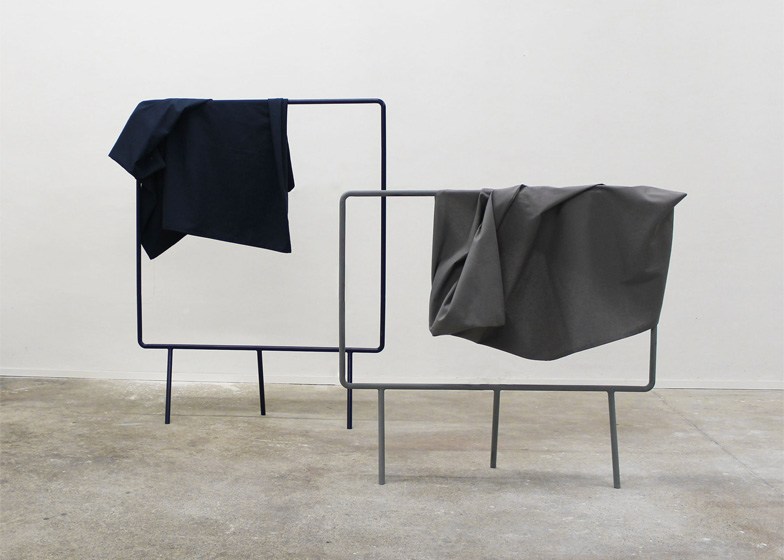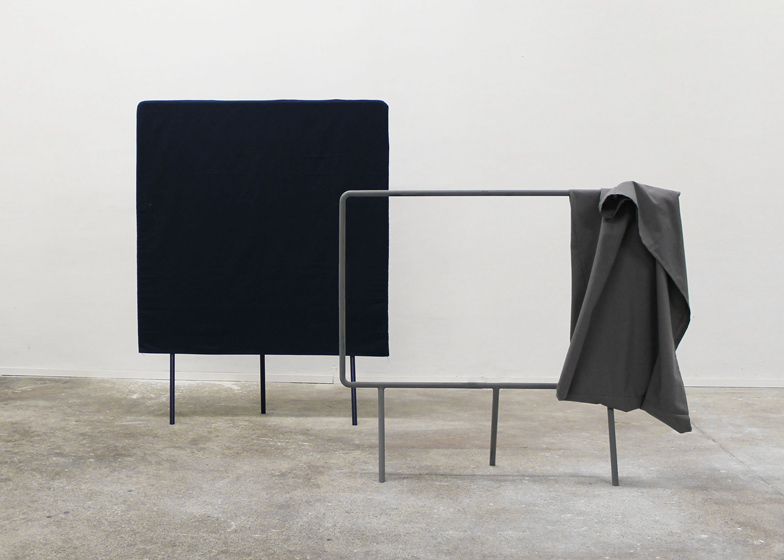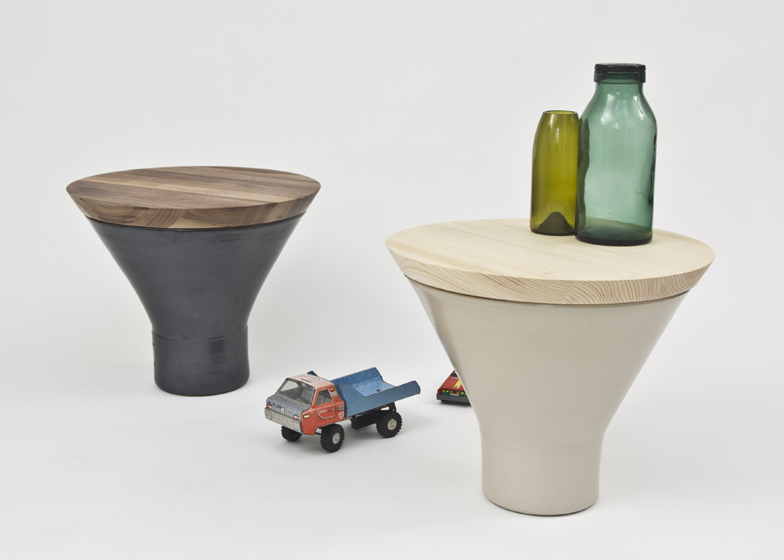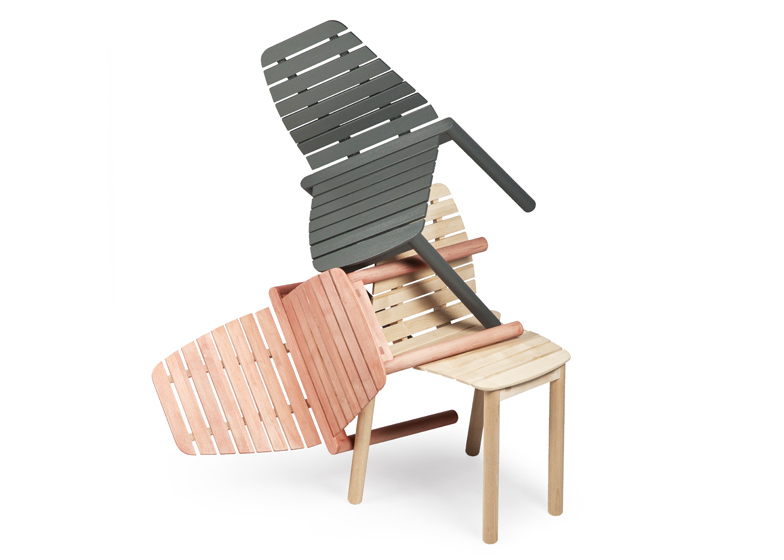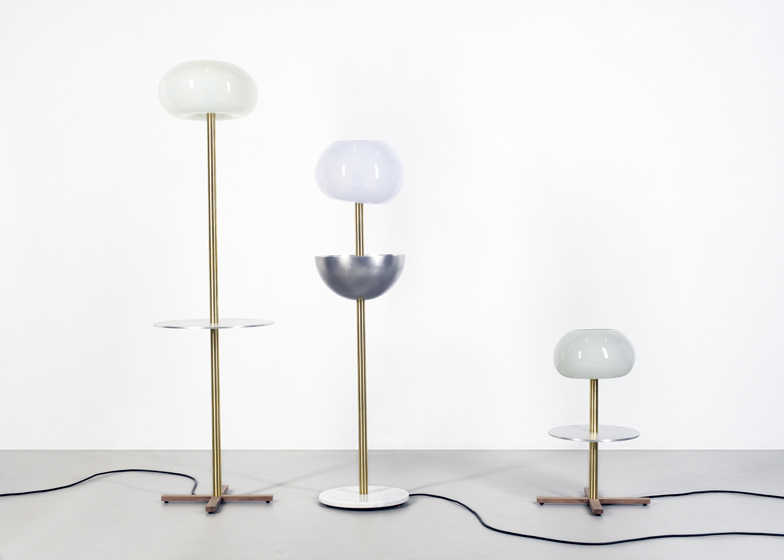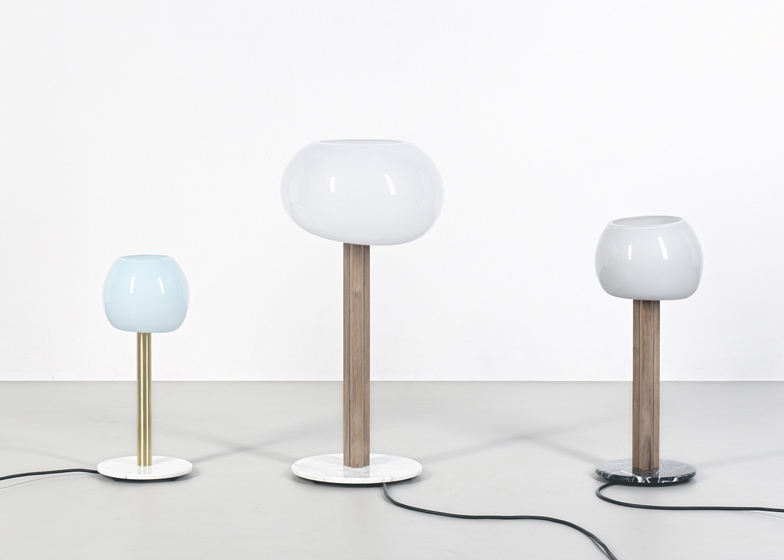Cologne 2013: squishy stools shaped like animals and a family of multi-storey glass jars are among the objects designed for an exhibition during last week's interior design event Passagen in Cologne (+ slideshow).
Above: Pets stool by Hanna Emelie Ernsting
Objects for the Neighbour took place at Passagen, which runs alongside trade fair imm cologne, and featured eight designers' work inspired by the concept of neighbourhood.
Above: Pets stool by Hanna Emelie Ernsting
Among the objects shown were the Pets stools by Frankfurt-based designer Hanna Emelie Ernsting, a collection of stools with loose fabric seats that fold into animal shapes. In 2011, Ernsting won the [D3] Contest in Cologne for a couch that's perfect for stroppy people.
Above: Sample Avenue by Karoline Fesser
Cologne-based designer Karoline Fesser contributed Sample Avenue, a family of glass vessels with stacking floors that line up like houses. Last year in Cologne, Fesser launched a modular seating collection made up of giant cushions.
Above: Sample Avenue by Karoline Fesser
Inspired by a foreign neighbour who moved to the watchmaking town of Biel to be with his partner, Swiss designer Florian Hauswirth designed a pair of clocks for two time zones. We've featured lots of designs by Hauswirth, including an experimental game of chess.
Above: (T)here by Florian Hauswirth
Also included was a pair of room dividers by Cologne-based designer Thomas Schnur, whose previous work includes a wooden bench that sits on logs instead of legs.
Above: Barrier by Thomas Schnur
Wiesbaden-based designer Sarah Böttger came up with a collection of household objects including a broom, dustpan and door stopper.
Above: Common Things by Sarah Böttger
Frankfurt-based designer Kai Linke contributed stoneware vessels that also serve as side tables, inspired by the canning jars used in his home town to preserve food. We previously featured vases and side tables that Linke made by sand-blasting timber and casting the resulting shapes in ceramic.
Above: Buurman by Kai Linke
Belgian designer Julien Renault's trio of chairs was inspired by his elderly neighbour's habit of reading the newspaper on a park bench. Renault previously won the [D3] Contest in Cologne with a collection of hand-forged aluminium furniture.
Above: Park Chair by Julien Renault
Finally, German designer Hanna Krüger came up with a lighting collection inspired by ballet costumes, where each light represents an individual character with its own silhouette.
Above: Figurines by Hanna Krüger
We published lots of products from imm cologne this year, including the interlocking wooden shelving that won the [D3] Contest – see all designs from Cologne 2013.
Above: Figurines by Hanna Krüger
Here's some information from the organisers:
From 14th through 20th January 2013, the exhibition Objects for the Neighbour envisions what initially is out of reach. The focus is on the neighbour: eight designers create objects on the subject of neighbourhood, which they will display throughout the Passagen in Cologne.
The designers Sarah Böttger (D), Hanna Ernsting (D), Karoline Fesser (D), Florian Hauswirth (CH), Hanna Krüger (D), Kai Linke (D), Julien Renault (B) und Thomas Schnur (D) have already displayed their work at national and international fairs. They are united by friendship and their interest in serially produced products. With Objects for the Neighbour they engage in a joined topic, which is generally accessible. However, individually it can be very different in detail and complexity.
The neighbour – is it an actual person or rather a vague guess? Perhaps he is a mirage, wishful thinking or memory. Where is the start of a neighbourhood to begin with? At the own front door, the boundary of the city, the region, the country, the continent or the planet? Or does neighbourhood start within the family, friendship or a relationship?
Thus the subject neighbourhood therefore appears vague and fuzzy. Only through approaches and decisions it obtains an identity, which in turn can be divined based on the actual product.

